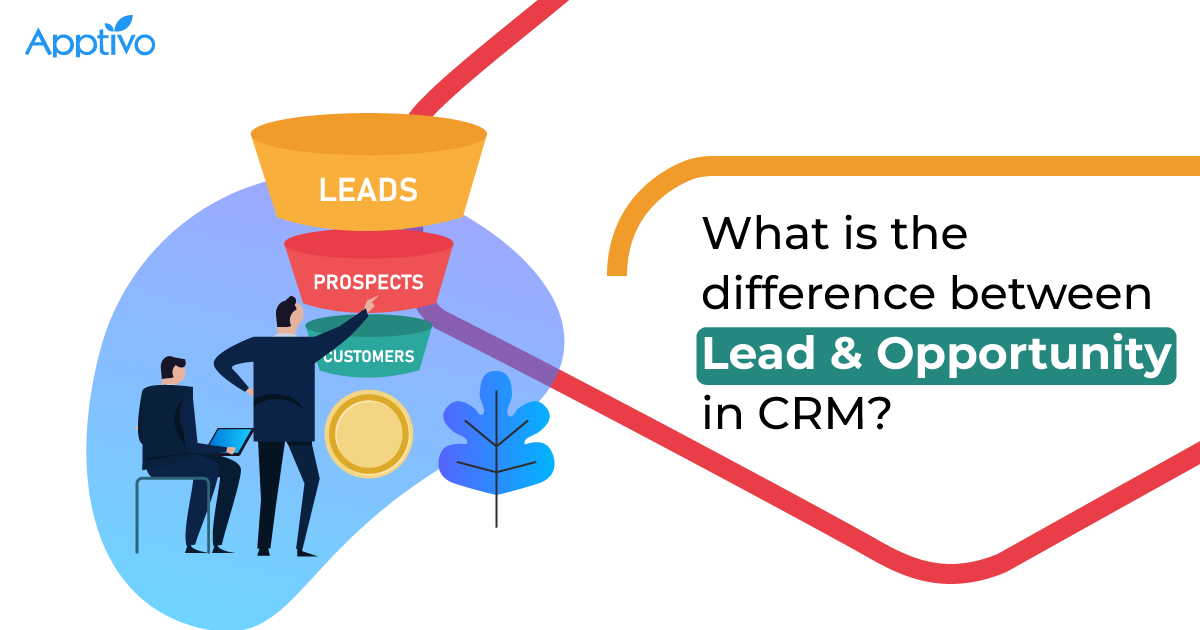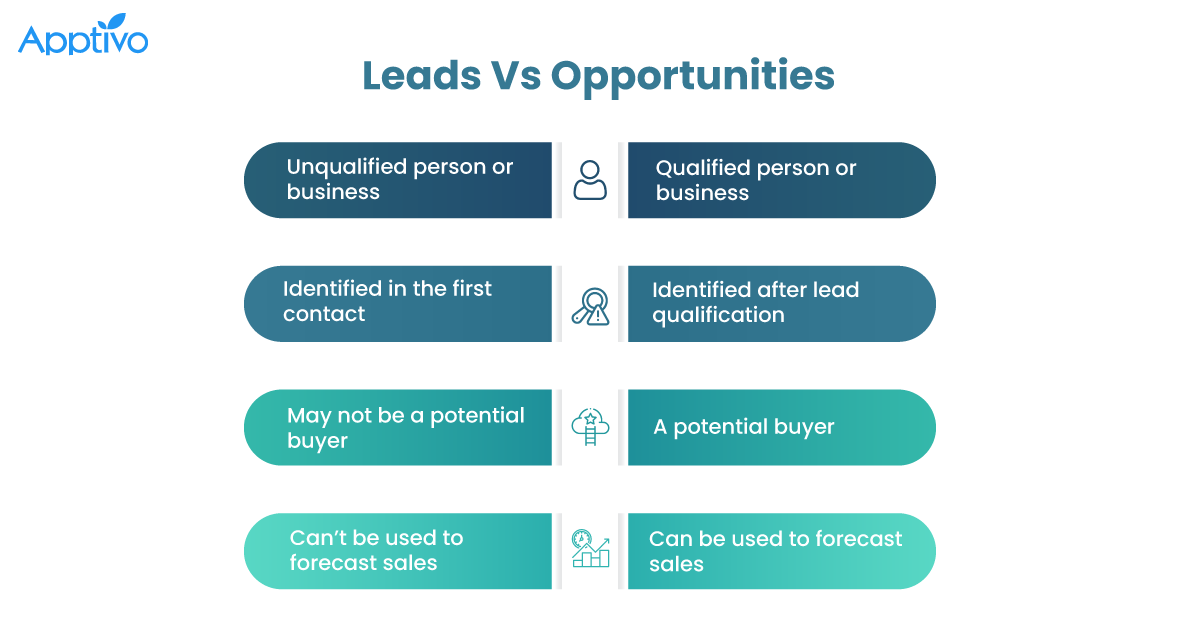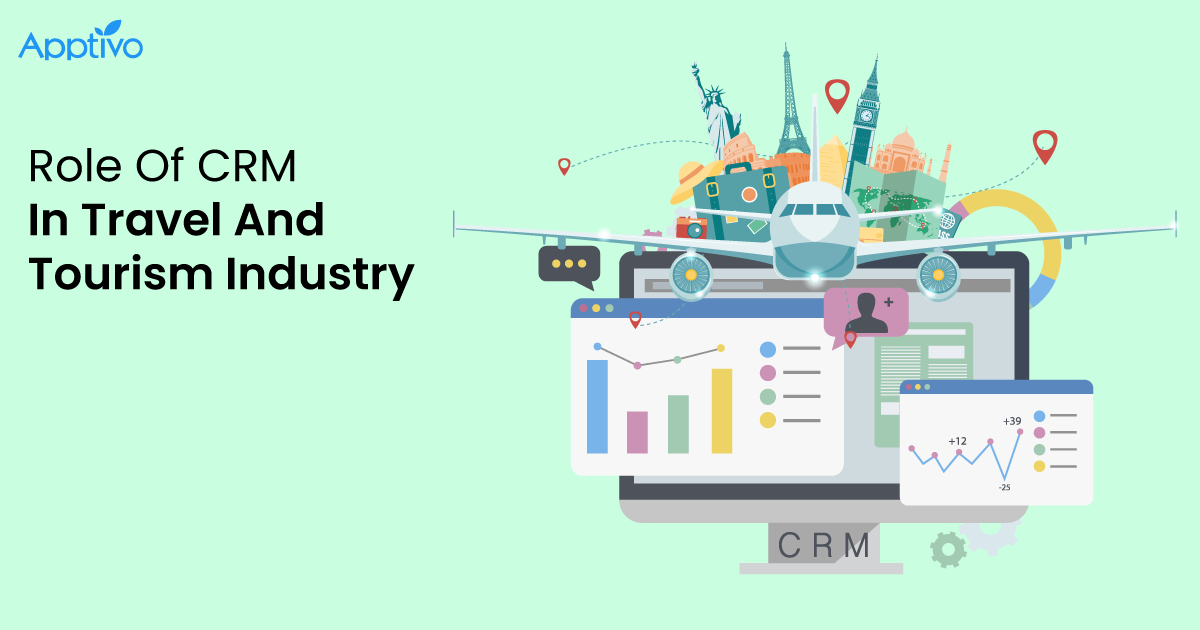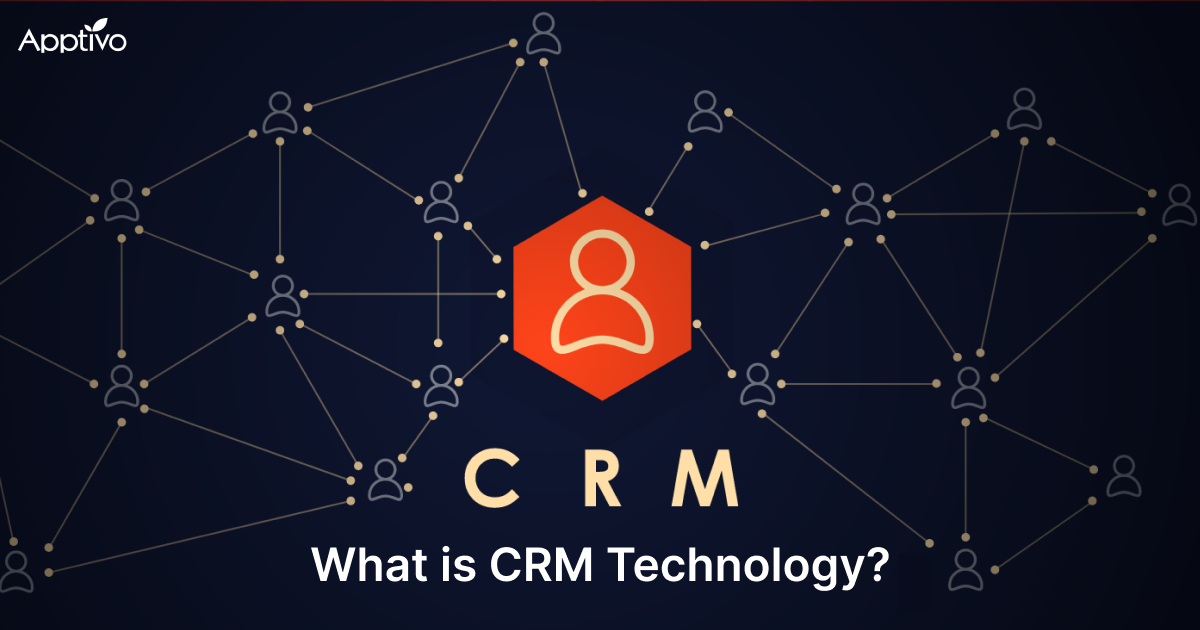 |
Sales have a primary role in businesses in building brand awareness and increasing the customer retention rate. Sales teams act as a bridge between the customers and the business. For this purpose, companies invest a huge amount in optimizing the performance of the sales teams. Salespeople follow up right from capturing a lead, converting it to sales qualified lead, moving it into pipeline opportunities, and improving the customer conversion rate. In short, sales teams have a significant role in increasing the revenue of a company.
If you are part of a sales team, you must be acquainted with common sales terms like CRM, pipeline management, opportunity vs lead, customer relations, and conversion rate. However, if you are new to this CRM sales industry, it could be quite challenging to gauge the difference between lead and opportunity. To simplify your work easier, we have explained the difference between lead and opportunity in CRM sales.
In general, you should note that leads and opportunities are different stages of a sales process. It is not that if there is lead, there will be no opportunity. In short, they do not act as alternatives. But, getting to know the difference between them leads to smooth sales pipeline management and an increased productivity rate.
 |
What is lead in sales?
Occupying the top of the sales funnel, leads are a person or any business that is not yet qualified. These leads are captured from multiple sources like websites, social media, research, customer referrals, paid marketing, or any third-party sources. A lead can also be obtained through inbound marketing where they sign up for your newsletter, blog, or reply to any of your cold emails.
However, one should remember that having a lead does not make them a potential buyer directly. Typically, sales teams have a well-defined sales process through which they qualify leads. In this process, the salesperson assesses if the lead has the potential to become a customer, identifies their requirements, and measures the probability of a lead converting into a potential customer. So, a lead marks the beginning of the sales cycle.
So, a lead marks the beginning of the sales cycle, and by effectively managing lead stages, sales teams can track the journey of lead stages, nurture them with tailored strategies, and increase the likelihood of converting them into qualified prospects and ultimately, loyal customers.
What is an opportunity?
Moving down the sales funnel, an opportunity is a qualified lead who has expressed their interest in your product or service. Here, the lead has interacted with the sales team and believes that your product or service can provide a solution to their problem. While the previous stage, prospects, enable the sales team to understand the target market and buyer’s decision capabilities, the CRM opportunity stage culminates to the next level of interaction.
The process of qualifying sales opportunities is a detailed procedure that differs based on the requirement and criteria of the sales teams. Some teams prefer having the general stages like prospecting, qualification, needs analysis, value proposition, decision-making, price quote, negotiation, and other common stages. Some companies have shorter sales opportunity stages based on their products and services. For instance, an opportunity might move to the closed-won or loss status in just three stages as their business demands it.
CRM Sales Cycle – An Overview
A sales cycle is a process incorporated by salespeople to close a deal and convert a lead into a customer. This process defines the series of steps to be taken for a better conversion rate. Here, we have discussed the common sales stages that a lead normally goes through before they become a customer.
Identify the prospects
This is the first stage in the sales cycle where companies evaluate and understand their target audience. Here, the sales team focuses more on the researching part rather than reaching out to the leads.
Furthermore, the initial step is the identification of the potential customers and choosing the best method to connect with them. This can be through emails, phone calls, and simple text messages.
Kick-off the conversation
In the previous stage, we have created a roadmap on how to initiate a conversation with the leads. Based on the analysis, this stage focuses on initiating contact with the leads. This can be done through any communication channel.
With the advancement in technology, sales teams have incorporated a number of mediums through which potential customers can interact with them. This can be via emails, text messages, phone calls, or video calls. Likewise, companies also provide leads with the potential to schedule demos and understand the products.
Qualify the leads
During the initial contacts, the sales teams must ask the right questions to the leads to understand their problems and weigh if your product can provide the necessary solution. The salesperson has to look into a number of factors while raising questions to the leads.
Through this communication, the sales team should understand the budget of the potential customer, their power to make decisions, and their intention to buy the product. By using Apptivo’s CRM system, sales teams can effectively document all the interactions and get a complete picture of the leads’ intention to make a purchase.
Make a proposal
In this stage, the sales team must come up with an offer that would be difficult for the potential customer to refuse. In the qualification phase, the sales team would have shortlisted the potential customers while filtering the bad leads. From the selected list, the sales team has to work out an individual strategy to offer the right price for the products.
The previous interactions will give the necessary feedback for the sales team to restructure the proposal. Based on the information obtained, the sales team can make the pitch profitable and increase the conversion rate.
Understanding objections
While offering the proposal, the salespeople may come across some objections from the customer end. The potential customers could also have several questions and face skepticism before going for the purchase. It is the responsibility of the salespeople to clarify the doubts of the potential customers with patience.
Most sales teams tend to stop the interaction right after the first rejection. The sales teams should create a strategy where the sales teams initiate communication with the prospects and win their confidence. By this, the prospects would feel encouraged to interact with the salesperson.
Close the deal
Once the queries and concerns of the prospects are cleared, the sales team can create an official proposal after multiple negotiations. Once this step is finished and both parties are satisfied with the proposal, the customer can sign the deal and make the purchase.
However, closing the deal does not end the work of the teams. Rather, as a next step, the account executive should take up the task to follow up regularly with the customers, gather their feedback, and take appropriate actions thereby, ensuring good customer service and reducing the customer churn rate.
Best Practices For Managing Sales Leads
To make the lead and opportunity management process streamlined, you have to create an effortless sales process and qualify the leads with a better system that is carefully put forth after systematic research. There is no definite method for managing pipeline in sales and businesses can improvise their sales process only through implementation and improvisation of the process continuously.
While the previous section puts an end to the lead vs prospect vs opportunity debate. In this section, we have listed some of the best practices for converting leads into opportunities and increasing the conversion rate.
- Before moving forward with the process, sales teams should have a clear view of the conversion rates. Sales teams can devise a metrics-based analysis according to key performance indicators (KPIs). With this, all teams will know how many leads are converted into opportunities, the time taken to move qualified leads across the sales funnel, and the conversion rate. Apptivo has detailed dashboards that help sales managers to track the performance of their leads, prospects, and opportunities in real-time.
- Sales managers must implement a definite process for qualifying the leads. Once a lead enters your CRM system from multiple sources, the salespeople must carry out lead scoring by analyzing the scope of leads entering into the sales funnel and being converted into opportunities. By integrating your sales teams with the best CRM system, the leads can be qualified and moved to the next stage automatically. Furthermore, the automation tools of the Apptivo customer relationship management system are what your team needs to decrease redundant tasks.
- Utilize a system that has the necessary collaboration tools to record each and every interaction. For instance, by having a calendar, you can easily schedule all the upcoming events and prevent double booking. Likewise, a distinct notes section in each record segregates the individual interactions and enables employees to carry forward the future interactions without much confusion. Apptivo has collaboration tools like Notes, Calendar, Agenda, Emails, and Documents to document every interaction related to a particular lead or opportunity information.
- Integrate your sales teams with business management software that assists in tracking and converting the leads until they become an opportunity. It is recommended for the system that you use to have full capabilities to support not only in lead to opportunity process but also provide assistance throughout the lifetime of customers with your business. Apptivo has 65+ business management applications that are designed to serve the needs of all the departments in your business.
- Provide timely training to your salespeople regularly to empower them with the trends in the sales industry. Keep them equipped with the latest technology and ensure using solutions that are easy to use and are difficult to be accessed by third parties. By making use of simplified but advanced solutions, you can save the time spent on training and bring more trainees to the workforce within a short period of time. This also reduces the transient periods taken by newly joined employees and adds more value to your workforce.
- Create a bridge between sales and marketing teams to overcome the loopholes in the process. By this, both teams can avert the trouble of waiting for approvals and accessing the other team’s information. With the selective access facility of Apptivo’s cloud software, the sales and marketing managers can predefine the accessibility of every employee and reserve the time spent waiting for more productive tasks.
Conclusion
Though there are several challenges faced by sales teams especially sales managers while managing leads. It should not be ignored that a number of benefits can be achieved if a streamlined process is implemented. By understanding the process and being aware of the sales teams, it becomes smooth for sales teams to become experts in their process and work tactfully while coming across unprecedented challenges during interaction with leads and prospects.
Also, Read
- How do I create tags in Leads App?
- How do I Restore Deleted Leads?
- How do I View the Unresponded Leads?
Latest Blogs

Role Of CRM In Travel And Tourism Industry
Travel and tourism have been a significant part of everyone’s life since the ancient period. When we skim through the pages of history, It should be noted that humans were initially nomads before they became settled in one place. They...
Read more →
WHAT IS CRM TECHNOLOGY?
Introduction CRM is a technology that helps manage the entire customer information and interactions in order to build and maintain superior customer relationships. The CRM solution replaces spreadsheets and other different applications, which makes it easy for the businesses to...
Read more →
Everything you need to know about the Annual Maintenance Contract!
1. What is an Annual Maintenance Contract? 2. Benefits of Maintenance Contracts 3. How can Apptivo CRM help you manage maintenance agreements and vendors? 4. Summary Think about getting the confidence that the machinery is well-maintained and performing optimally, without...
Read more →
